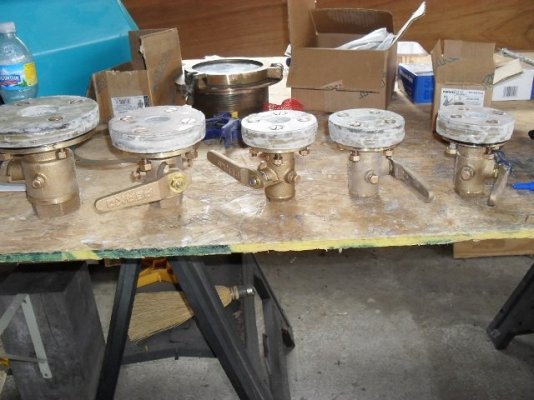Shoalwaters
Guru
- Joined
- Feb 24, 2008
- Messages
- 681
- Location
- St. Lucia, West Indies
- Vessel Name
- "Dragon Lady"
- Vessel Make
- DeFever 41
The seacock (a/c cooling water) in the pic below is getting progressively more difficult to turn. It will soon be haulout time and I intend to service it. Any advice on dismantling would be appreciated? The core (bit that moves) appears to be tapered. No maker's name that I can see.
Edit: Ooops! sorry, posted in the wrong category.*I can't find how to move or delete, so here it stays.
T.I.A.
Mike
-- Edited by Shoalwaters on Wednesday 10th of August 2011 02:20:32 PM
Edit: Ooops! sorry, posted in the wrong category.*I can't find how to move or delete, so here it stays.
T.I.A.
Mike
-- Edited by Shoalwaters on Wednesday 10th of August 2011 02:20:32 PM


